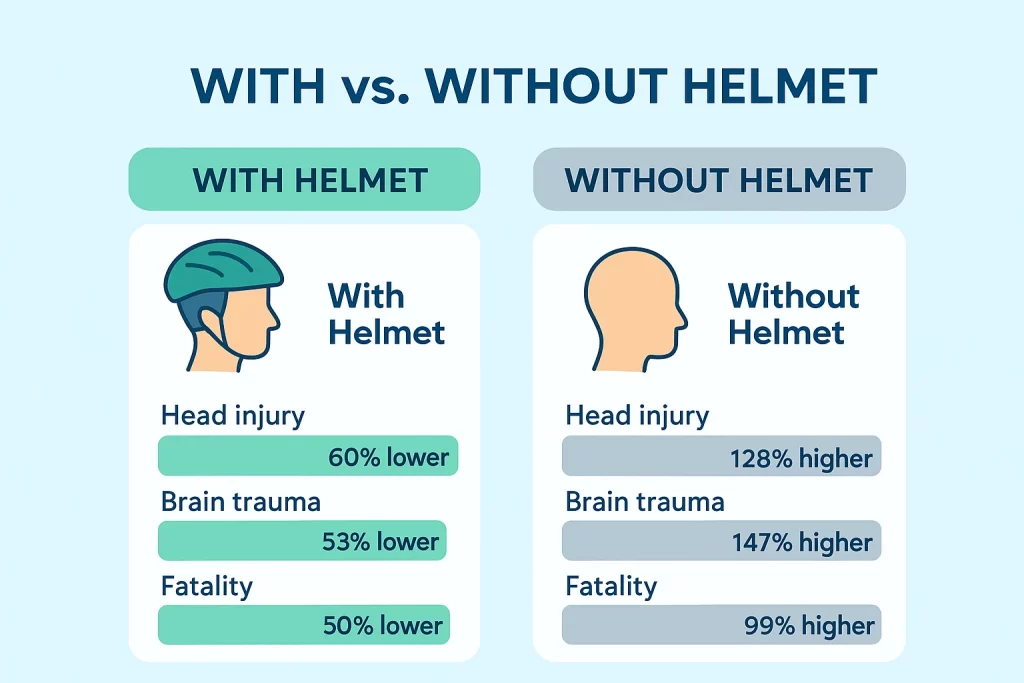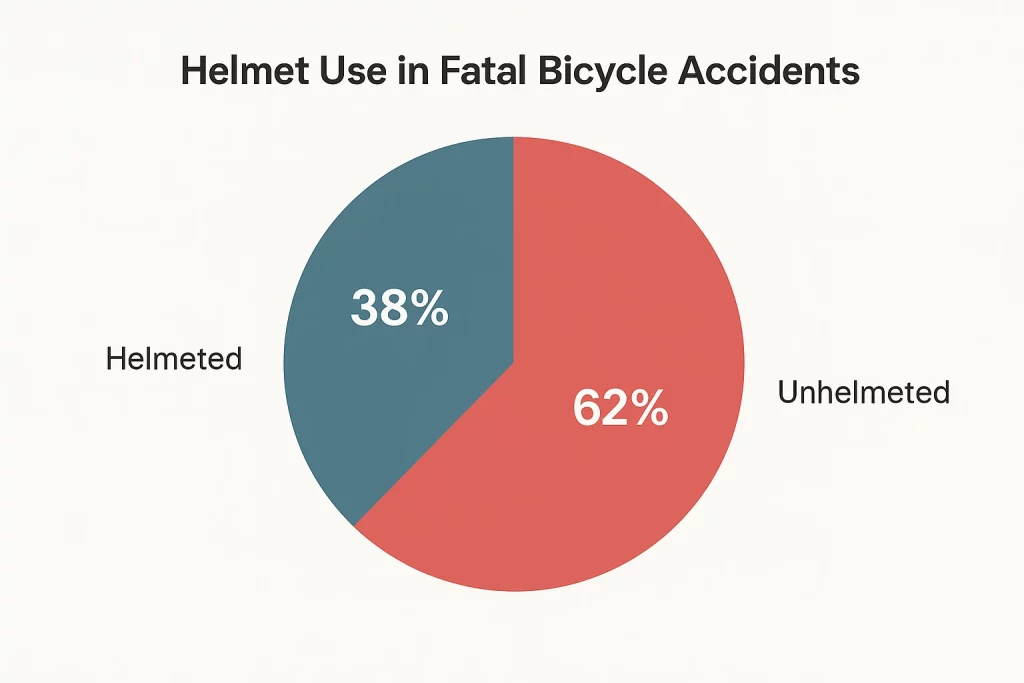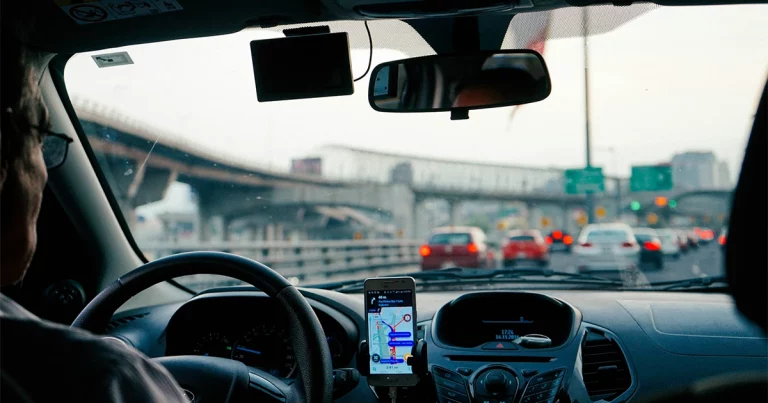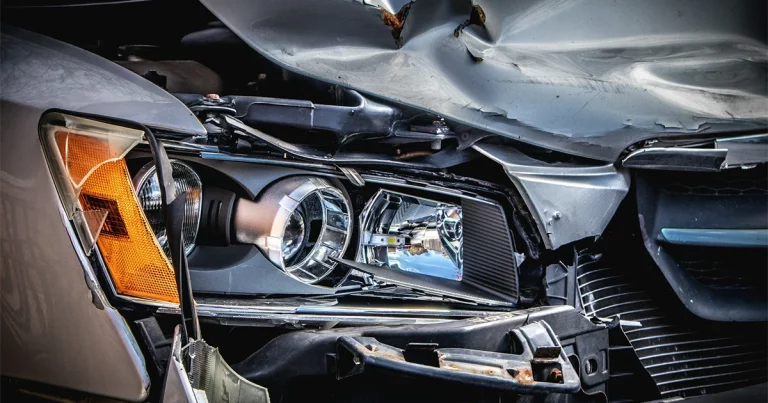🚴♀️ Bicycle accidents cause over 1,000 deaths each year in the U.S. Learn why helmets matter, what causes most crashes, and how to reduce risks effectively.
Introduction: A Growing Concern on American Roads
Bicycle accidents have become a serious public safety issue in the United States. According to the Centers for Disease Control and Prevention (CDC), more than 130,000 bicyclists are injured and over 1,000 are killed each year in traffic crashes. While cycling remains a healthy and eco-friendly mode of transportation, the risks associated with riding without a helmet are significant and often underestimated.

What Happens If You Fall Off a Bike Without a Helmet?
A helmet can reduce the risk of serious head injury by 60% and traumatic brain injury (TBI) by 53%, according to the Insurance Institute for Highway Safety (IIHS). Without one, a simple fall can turn fatal.
Unhelmeted cyclists are three times more likely to sustain fatal head trauma compared to those wearing helmets.
Common outcomes of a helmetless crash include:
- Skull fractures
- Brain swelling or internal bleeding
- Long-term cognitive impairment
- Facial disfigurement

U.S. Bicycle Accident Statistics (Latest National Data)
| Category | Statistics (U.S.) | Source (Authority) |
|---|---|---|
| Annual bicycle-related deaths | ~1,105 deaths (2023 est.) | CDC, NHTSA |
| Annual injuries | 130,000+ | CDC |
| Head injuries in fatal crashes | 60% involve head trauma | IIHS |
| Helmet usage rate | 47% of riders wear helmets | NHTSA |
| Fatalities involving no helmet | 62% of deaths | National Safety Council |
| Average age of fatal victims | 47 years old | NHTSA 2023 Report |
| % of urban bicycle deaths | 78% occur in urban areas | U.S. DOT |
| Leading cause | Motor vehicle collisions (75%) | NHTSA |
| Alcohol involvement (rider or driver) | 28% of fatal crashes | NHTSA |
| Gender breakdown | 87% male, 13% female | IIHS |
| States with highest death rates | Florida, California, Texas | NHTSA |
| Dutch helmet use rate | <3% of adult cyclists | Dutch SWOV Institute |
What Is the Leading Cause of Bicycle Deaths?
Most bicycle accidents occur due to collisions with motor vehicles, especially in urban environments with heavy traffic. According to NHTSA, 75% of all fatal bicycle crashes happen on city streets, often at intersections or during night riding.
Key contributing factors include:
- Distracted or speeding drivers
- Poor road design and visibility
- Lack of dedicated bike lanes
- Cyclists failing to follow traffic rules

Is Biking Without a Helmet a “No-Brainer”?
The phrase “no-brainer” takes on dark irony when you look at the statistics. Helmets are proven to reduce the risk of severe head injury, yet many riders still skip them due to comfort or fashion concerns.
A National Safety Council report found that 6 out of 10 cyclists who died in U.S. traffic crashes were not wearing helmets. Despite public awareness campaigns, compliance remains low among adults compared to children.

Free Car Injury Settlement Calculator
Estimated Settlement Range
Please enter your data to see estimate
This guide explains how the Accident Settlement Calculator works and what factors influence your potential compensation. Click here to learn more in our detailed calculator guide
Why Do the Dutch Rarely Wear Helmets?
The Netherlands has one of the lowest cyclist fatality rates in the world despite minimal helmet use (<3%). The difference lies in infrastructure and culture.
The Dutch model emphasizes:
- Dedicated, separated cycling lanes
- Low-speed urban zones
- Strict driver liability laws (“strict liability principle”)
- Early cycling education
This system makes everyday cycling much safer, showing that infrastructure design can sometimes play as big a role as protective gear.

Preventing Bicycle Accidents in the U.S.
While America is making progress with Vision Zero and Complete Streets initiatives, cyclists still face high risks. To reduce bicycle accidents and fatalities:
✅ Always wear a certified helmet
✅ Use lights and reflective gear at night
✅ Follow traffic laws and signals
✅ Avoid riding under the influence
✅ Advocate for protected bike lanes
Conclusion: A Safer Future for Cyclists
Bicycle accidents will continue to rise unless both infrastructure and behavior change. Helmets alone can’t prevent every tragedy, but they remain the single most effective protection against head injuries.
Improving public awareness, urban planning, and enforcement can help the U.S. move closer to the Dutch model—where cycling is not just healthy, but truly safe.






